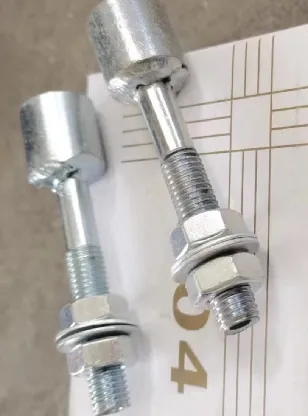loading...
- No. 9, Xingyuan South Street, Dongwaihuan Road, Zaoqiang County, Hengshui, Hebei, China
- admin@zjcomposites.com
- +86 15097380338
- Welcome to visit our website!
Innovative Moulded Gratings for Enhanced Durability and Versatility in Various Applications
Understanding Moulded Gratings A Comprehensive Overview
Moulded gratings have become an essential component in various industries due to their versatility, durability, and safety features. These grid-like structures are primarily used for flooring, walkways, and platforms, providing a sturdy surface while allowing for drainage and ventilation. This article explores the characteristics, advantages, applications, and future prospects of moulded gratings.
Characteristics of Moulded Gratings
Moulded gratings are typically made from fibreglass reinforced plastic (FRP), a material that combines the strength of glass fibres with the lightweight and corrosion-resistant properties of plastic. The manufacturing process involves heating the resin and glass fibres to form a solid, rigid structure. This process ensures that the gratings are not only strong but also non-conductive and resistant to harsh chemicals, making them ideal for industrial environments.
The standard design of moulded gratings consists of a grid pattern, which provides excellent load-bearing capacity while minimizing weight. The grating panels come in various sizes and thicknesses, allowing for customization based on specific application needs. Additionally, these gratings can be manufactured with different surface textures to enhance slip resistance, further ensuring safety in workplaces.
Advantages of Moulded Gratings
One of the primary advantages of moulded gratings is their resistance to environmental factors. Unlike traditional materials such as steel or wood, FRP moulded gratings do not corrode, rust, or decay, significantly extending their lifespan. This durability reduces maintenance costs and the frequency of replacements, making them a cost-effective solution in the long run.
Furthermore, moulded gratings are lightweight, which simplifies installation and handling. They can be easily cut and modified to fit various spaces, reducing the need for specialized tools or equipment. This flexibility not only speeds up the installation process but also makes them suitable for temporary applications in construction or event setups.
moulded gratings

In terms of safety, the slip-resistant surface of moulded gratings provides better traction, minimizing the risk of accidents in wet or oily conditions. Their open design also allows for the quick drainage of liquids, reducing puddles and enhancing workplace safety.
Applications of Moulded Gratings
Moulded gratings are widely used across multiple sectors, including chemical processing, water treatment, food and beverage, and even marine applications. In chemical plants, their resistance to corrosive substances is crucial for providing safe walkways and platforms. In wastewater treatment facilities, the drainage capabilities of these gratings help manage excess water effectively.
The food and beverage industry benefits from moulded gratings as they are easy to clean and do not harbor bacteria, ensuring compliance with hygiene standards. In marine environments, FRP gratings resist saltwater corrosion, making them ideal for docks and piers.
Future Prospects
As industries continue to evolve and prioritize safety and sustainability, the demand for moulded gratings is expected to grow. Innovations in materials and design are likely to enhance the performance and efficiency of these gratings. Moreover, the increasing focus on eco-friendly solutions will likely lead to the development of greener manufacturing processes and recyclable products.
In conclusion, moulded gratings offer a reliable, durable, and safe flooring solution suitable for various applications. Their unique characteristics and advantages make them a preferred choice in numerous industries, and as technology advances, the future of moulded gratings looks promising. Whether for industrial use or architectural applications, these gratings are set to play a crucial role in enhancing safety and operational efficiency across the globe.
-
GRP Structures: The Future of Lightweight, High-Performance EngineeringNewsJun.20,2025
-
FRP Water Tank: High-Performance Storage for Corrosive and Clean Water SystemsNewsJun.20,2025
-
FRP Square Tube: The New Industry Standard for Chemical and Structural ApplicationsNewsJun.20,2025
-
FRP Pultruded Profiles: The Ultimate Choice for Lightweight Structural StrengthNewsJun.20,2025
-
FRP Handrails: The Safer, Smarter, and Stronger Choice for Modern InfrastructureNewsJun.20,2025
-
FRP Grating: The Smart Solution for Durable, Lightweight Industrial FlooringNewsJun.20,2025
-
Why Choose a Galvanized Water Tank for Your Storage NeedsNewsMay.21,2025
